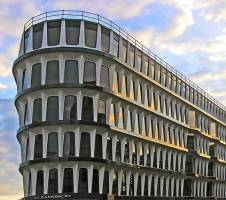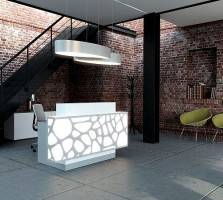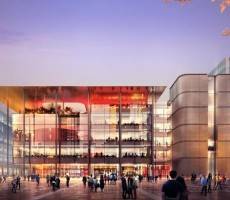March 3, 2015
Video and gallery: Google’s new Silicon Valley headquarters
 Google may be having second thoughts about the design of its new London offices, but it is rather less reticent about that of its new Silicon Valley headquarters. It plans to transform a 2.5 million square foot site in the Californian city of Mountain View into a home for around 10,000 workers. The pastoral setting has been designed by Thomas Heatherwick and Bjarke Engels and incorporates parkland dotted with glass buildings including some Eden Project like geodesic domes. Unsurprisingly the campus buildings have been designed to achieve a LEED platinum accreditation and cars are largely discouraged from the site. Heatherwick has described the plans as humanistic and the plans include a number of community facilities including a new public safety building, two new parks, an educational science centre and even a residential development on neighbouring land.
Google may be having second thoughts about the design of its new London offices, but it is rather less reticent about that of its new Silicon Valley headquarters. It plans to transform a 2.5 million square foot site in the Californian city of Mountain View into a home for around 10,000 workers. The pastoral setting has been designed by Thomas Heatherwick and Bjarke Engels and incorporates parkland dotted with glass buildings including some Eden Project like geodesic domes. Unsurprisingly the campus buildings have been designed to achieve a LEED platinum accreditation and cars are largely discouraged from the site. Heatherwick has described the plans as humanistic and the plans include a number of community facilities including a new public safety building, two new parks, an educational science centre and even a residential development on neighbouring land.











 BBC Wales has exchanged contracts with the developer of its new 150,000 sq. ft headquarters in the centre of Cardiff. Although still subject to final planning consent and the approval of BBC executives, the building is an anchor site in the Foster + Partners masterplanned Central Square regeneration project and work is confidently expected to begin in the middle of 2015 for completion in 2017 with full occupancy expected the following year. The new building will be home to some 1,000 staff and has been targeted to achieve a BREEAM excellent rating. Developers Rightacres expect the Central Square mixed use project to provide around 1 million sq. ft of office, residential and retail space, creating one of Wales’ largest property developments and regeneration schemes in the heart of Cardiff on the site of the current bus station.
BBC Wales has exchanged contracts with the developer of its new 150,000 sq. ft headquarters in the centre of Cardiff. Although still subject to final planning consent and the approval of BBC executives, the building is an anchor site in the Foster + Partners masterplanned Central Square regeneration project and work is confidently expected to begin in the middle of 2015 for completion in 2017 with full occupancy expected the following year. The new building will be home to some 1,000 staff and has been targeted to achieve a BREEAM excellent rating. Developers Rightacres expect the Central Square mixed use project to provide around 1 million sq. ft of office, residential and retail space, creating one of Wales’ largest property developments and regeneration schemes in the heart of Cardiff on the site of the current bus station.
















March 11, 2015
How a big, stupid idea can be more attractive than a small, effective one
by Mark Eltringham • Architecture, Comment, Property
We’re going to be hearing a lot of big ideas over the next few weeks. Politicians will be sharing their ‘visions’ with us and letting us know exactly how ‘passionate’ they are about them and anything else Twitter tells them we care about. It’s going to be boring and infuriating, but we only have ourselves to blame. We fret when politicians don’t give us a handy label on which we can rest our hopes or lay the blame, depending on whether we agree with whatever the big idea is or not. Of course, David Cameron’s vision of choice when he became Prime Minister in 2010 was The Big Society. I won’t get into the rights and wrongs of that but I think we can all agree that The Big Society has been kicked unceremoniously into The Long Grass and we won’t be hearing much about it in the build up to this year’s General Election. Nor will we be hearing much about another of David Cameron’s pet projects even though that has actually gone on to be something of a success.
More →